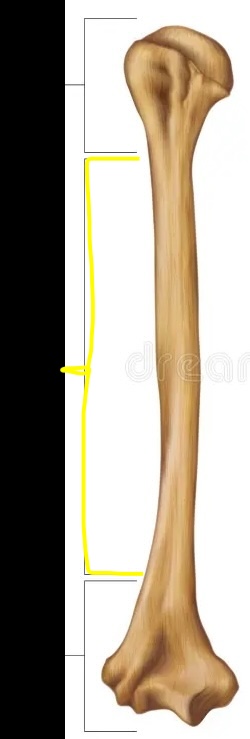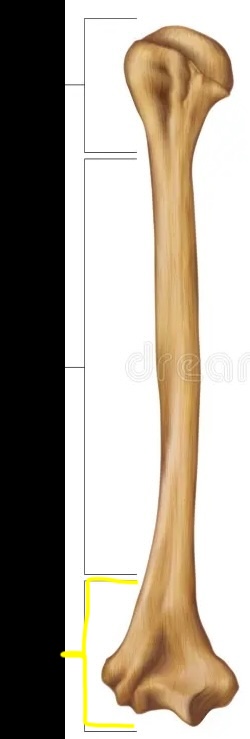Fuck My Life (Part 2)
1/85
There's no tags or description
Looks like no tags are added yet.
Name | Mastery | Learn | Test | Matching | Spaced |
|---|
No study sessions yet.
86 Terms
What are the two types of perspiration?
insensible and sensible
What is insensible perspiration?
Water loss from a traumatic event (i.e extreme burn)
What is sensible perspiration?
Water loss from sweat glands (i.e it’s hot outside)
What is the difference between sensible and insensible perspiration?
Insensible perspiration is when water loss is caused by an injury/burn, whereas sensible perspiration is when water loss by sweating.
What are the 5 layers of the epidermis (THICK SKIN) from the basement layer to the top surface ?
Stratum Basale
Stratum Spinosum
Stratum Granulosum
Stratum Lucidium
Stratum Corneum
What is the function of the stratum basale (bottom layer)?
it makes new cells that migrate to the stratum corneum
What is the function of the stratum corneum (top layer)?
it is the outermost layer of the skin; protective barrier
What are the 4 layers of the epidermis (THIN SKIN) from the basement layer to the top surface?
Stratum Basale
Stratum Spinosum
Stratum Granulosum
Stratum Corneum
The difference between thin skin and thick skin is ______________ ?
The Stratum Lucidium is not in thin skin.
Where is the thick skin located?
soles of feet; palms
Where is the thin skin located?
most of the body
What are the 3 layers of the skin?
Epidermis
Dermis (2 parts)
Hypodermis (subcutaneous)
What is the bottom layer of the skin?
hypodermis (subcutaneous)
What type of tissue is the hypodermis composed of?
fat (loose connective tissue)
What triggers goosebumps?
the Arrector pili
What type of tissue is the epidermis composed of?
stratified squamous epithelial tissue
What type of tissue is the dermis composed of?
dense irregular connective tissue
What are the two parts of the dermis?
1) Papillary layer; top layer
2) Reticular layer; bottom layer
How long does it take for the migration of new cells?
7 to 10 days (from the Basale to the Corneum)
What is the difference between the papillary layer and the reticular layer of the dermis?
The papillary layer has papilla (ridges)
whereas the reticular layer has sweat glands.
What is the function of the papillary layer of the dermis?
it is the layer of skin responsible for fingerprints; the upper, thinner layer of the dermis (skin), composed of loose connective tissue with many blood vessels
What is the function of the reticular layer of the dermis?
it is the layer that contains sweat glands; the deeper, thicker layer of the dermis, made up of dense connective tissue that provides structural support and strength to the skin
What is the function of melanin/melanocytes?
it is a pigment providing pigmentation for the eyes, hair, and skin.
What is the function of carotene?
it is a pigment that causes orange coloration
** think carrots
What illness causes yellow pigmentation?
Jaundice
What condition causes blue pigmentation?
Cyanosis
What is the function of sebaceous glands?
it produces sebum (the equivalent of a natural oil), which protects the skin and hair.
What is the function of the apocrine glands?
it produces thick sweat, found in the groin and armpits
What is the function of the merocrine glands?
it produces thin sweat, found mostly all around the body
What is the function of the ceruminous glands?
it produces ear wax
What is the difference between the aprocrine sweat glands and the merocrine sweat glands?
Aprocrine produces thick sweat
whereas, merocrine produces thin sweat
Due to the thicker sweat of the apocrine system, bacteria ____________
gets trapped and grows.
The best way to describe skin regeneration is :
skin regeneration starts at the basale and after 7-10 days, the new skin cells reach the corneum
(simpler words: new cells from stratum basale go to stratum corneum in a 7-10 day span) ***

Which section of the long bone is this?
proximal epiphysis

Which section of the long bone is this?
diaphysis (shaft)

Which section of the long bone is this?
distal epiphysis
What are the two types of bone coverings?
periosteum and perichondrium
What is the function of the periosteum?
outer covering of bones; it provides a point of attachment for tendons and ligaments
What is the function of the perichondrium?
surrounds cartilage on developing bones; involved in bone remodeling
What is a sinus?
space behind a bone occupied by air
What is tuberosity ?
A small bump/projection found on the bone (i.e tibial tuberosity, ischial tuberosity)
What is a foramen?
A hole found on the skeleton (i.e magnum foramen)
What is a condyle?
smooth bump/projection on a bone that articulates with another bone (i.e occipital condyles)
What is the difference between tuberosity and a condyle?**
a condyle is a smooth, rounded end of a bone that is part of a joint, while a tuberosity is a large, roughened bony projection
What is a fossa?
a shallow depression on a bone (i.e hypophyseal fossa)
What are the different types of bones?
short, flat, irregular, long, and sesamoid
What are examples of short bones?
carpals **and tarsals
What are examples of flat bones?
sternum and parietal ***
What are examples of irregular bones?
vertebrae **and sacrum
What are examples of long bones?
tibula, fibula, femur**, and humerus
What is an example of a sesamoid bone?
patella
What is the correct order of the formation of bone cells? (start to finish)
1) Osteogenic
2) Osteoblasts
3) Osteoclasts
4) Osteocytes
What are osteogenic cells?
stem cells; the start of the process
Later develops into osteoblasts***
What are osteoblast cells?
immature cells; secrete calcium/bone building cell
Later develops into osteoclasts***
What are osteoclast cells?
dissolves and breaks/shapes calcium; bone dissolving cell
Later develops into osteocytes***
What are osteocytes?
mature bone cell; the end of the process
What is an osteon?
the structural unit of bone
What is the lacunae?
The space in the osteon where osteocytes reside
What is ossification?
the process of making bone
What is endochondral ossification?
bone formation through cartilage
What is the primary ossification center?
in the shaft/diaphysis of the bone, ossification occurs (first stage)
What is the secondary ossification center?
in the ends/epiphysis of a bone, ossification occurs (second stage)
What is an epiphyseal plate?
the growth plate located between the epiphysis and the diaphysis
(still growing!!**)
What is an epiphyseal line?
an ossified “line” that forms after epiphyseal plate after growth
(done growing!!)**
What two cells are responsible for bone remodeling?
osteoblasts and osteoclasts are the combined action of bone remodeling.
If there are more osteoblasts than osteoclasts, the bone becomes _________
stronger
If there are more osteoclasts than osteoblasts, the bone becomes ___________
brittle
What is osteopenia?
reduced bone mass of lesser severity than osteoporosis.
What are two illnesses caused by an increased presence of deficient calcium ?
osteoporosis and osteopenia
What is osteoporosis?
reduced bone mass of high severity compared to osteopenia
In order to protect a fracture site, the formation of a _________ must occur.
Callus; extra layer of bone
What is a callus?
an extra layer of bone that occurs after a fractureb
The consequences of deficient calcium are
osteoporosis and osteopenia
Where would you find tight junctions? **
the bladder
The most common connective tissue is?**
collagen
What is the difference between efferent and afferent?**
afferent means when something goes into a structure
whereas, efferent means when something goes out of a structure
What is the function of the lymph system??**
cleans the blood
The most common type of cartilage is??**
hyaline
What are the 4 types of tissue membranes?**
1) Mucous membrane
2) Serous membrane]
3) Cutaneous membrane
4) Synovial membrane
The mucous membrane lines the ______________***
digestive system, respiratory system, urinary system, and the reproductive system
The cutaneous membrane is ___________**
the skin covering the body
The synovial membrane lines the _______***
joints
One of the main functions of the integumentary system is ?**
the synthesis of Vitamin D3
After an injury, what cells trigger an inflammatory response?**
mast cells
What medication does one take in order to suppress mast cells?**
antihistamine
The calcium in bone is primarily made up of a crystal called __________?***
hydroxyapatite